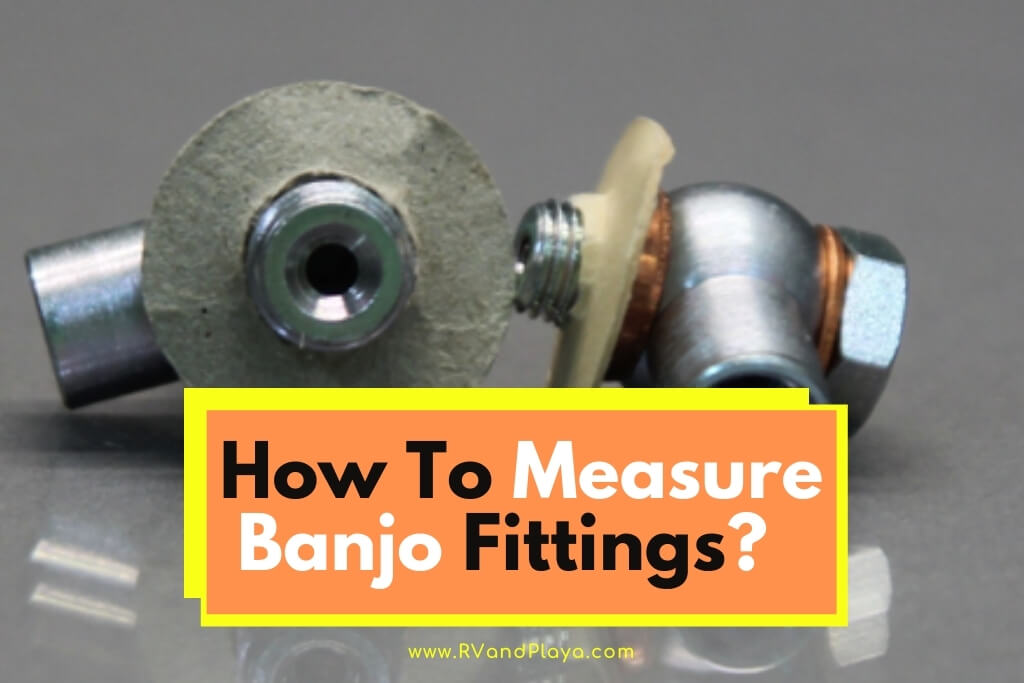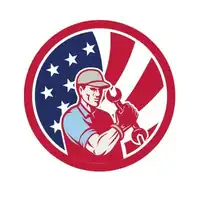Do you know how to measure Banjo Fittings? This is one of the questions our readers ask a lot. Well, we´ve got you covered.
Banjo fittings aren’t anything new, but they are certainly innovated. They easily take the place of elbow joints and other tubing that has to flush high-pressure fluid through 90° angles.
They are unique and precisely engineered so that orientation is irrelevant.
So, how to measure Banjo fittings? Banjo fittings are measured in the same way that bolts are—most banjo bolts have threads just like a standard bolt—the outer threads being the point of measurement on either side of the bolt. You can use a set of calipers for both female and male banjo fittings.
The feature that separates a banjo fitting from an elbow joint or a regular bolt is the tiny hole on the bolt itself, below the washer, and hexagonal head.
This hole is the point of ingress that flows from a line—such as a brake line—into the banjo bolt and out through the bottom.
The bolt itself is hollow, the hollow part serving as a conduit for fluid under pressure. Though there are threaded banjo bolts, there are also non-threaded ones as well.
It’s not necessary to have a threaded banjo bolt, so long as there’s a method for which it can be sealed in place.
Non-threaded Banjo bolts are necessary when the attempt to screw in the fitting around it, or itself into a female end, threatens to twist the tubing that’s running through the banjo.
Table of Contents
How To Properly Measure Banjo Fittings
First, you’ll need a pair of calipers—which are both prevalent and cheap from just about any online retailer that deals in automotive or household tools—along with the male end or the female end.
A common set of calipers has a long, pinching mechanism designed to clamp down on the male end of a banjo bolt to measure the diameter from the outside of the threads.
They also come with two, smaller measurements on the opposite end for measuring the size of the female end from inside the circle.
- Ditron IP54 Caliper: Digital calipers with LED display for internal and external measurements
- Kynup Digital Calipers: Another digital display option with internal and external measurements but no IP rating
- Mitutoyo Analog Measurement Calipers:Dial measurements are largely considered to be more trustworthy with this one measuring the male and female diameter
In any case, there are a lot of choices out there. Just do your research as there are always going to be some shoddily manufactured measuring instruments.
A good, quality set of calipers will give you an accurate measurement and the analog versions are the most recommended.
With the caliper in hand, simply tighten the calipers over the Banjo bolt threads, with the bolt threads running parallel with the caliper’s measuring tips and enclosing jaws. When they are seated snuggly, observe your measurement.
The same method applies to the female, internal measurement. On the opposite side of the male measuring tips, a caliper has a second pair of female measuring tips.
Insert the two tips in the female end for internal measurement and open the measuring tips up until they are snug against the interior walls. Observe and record your measurement.
Read also: What is a Banjo Bolt on Brakes (Caliper, Leaking, Fitting)
Other Measuring Methods/Tools For Banjo Fittings
Calipers aren’t the only way to accurately measure banjo fittings—including bolts both female internal measurements and male.
There are also cheap, preset measuring devices along with nut and bolt thread identifier tools.
Click the link to Amazon and get Banjo Fittings Today!
Nut And Bolt Thread Identifiers
These are essentially cable strings full of pre-sized gauges that have both a female end and a male end. For these to be used, you have to be dealing with a threaded banjo bolt or insert.
If it is not threaded, these won’t be very useful.
- Nut and Bolt Thread Checker: Several, independent gauges with both English and Metric sizes. There are 14 gauges for inches and 12 gauges for Metric
- 1 TU58 Thread Measuring Gauge: This is for male end measuring only, with inserts along the surface of an aluminum sheet
- Accusize Industrial Tools: This is for the female insert measuring only and it doesn’t require the female end to be threaded
- Stainlesstown Nut Bolt Thread Gauge: This gauge is plastic and, similar to a mill gauge, disposable if it breaks down
- Accusize Industrial Tools U.S. and Metric Thread Measuring Wire Set: Works the same as the Accusize industrial tools set, with longer measuring pieces and packaged differently
There’s a lot to unpack in the world of bolt-measuring equipment because there are so many to choose from.
While prevailing advice would be to stick with calipers only, these are plenty viable for measuring banjo fittings.
Many of them are good for measuring banjo fittings that do not have threads. No matter what kind of banjo fitting you’re dealing with, there is a measuring device that applies to it.
Banjo Quick Tips Manifold Fitting Sizing >> Check out the video below:
What Are Banjo Bolts Used For?
Banjo bolts and variations of the banjo design are used in many different applications. Basically, anything that puts fluid under pressure within complicated systems is likely to have a banjo fitting for some uses within that architecture.
Banjo fittings are most commonly used in any system that utilizes hydraulics, fuel filters, power steering designs, brake connectors for brake fluid passage, and oil-fed turbochargers.
That’s not the entire extent of it either.
Anything that requires a 90° angle through which pressurized fluid has to pass would do well to utilize a banjo fitting.
It enhances the strength of the connection with steel fittings versus PVC and also lowers the profile of the design.
A banjo fitting doesn’t require near as much space to create a 90° angle for fluid ingress and egress. PVC piping is another story altogether.
PVC elbows can get pretty small, however, the angle at which the tubes have to enter each end is restricted to very light angles, taking up too much space lengthwise.
- Hydraulic Power Systems: Includes hydraulic unions, hydraulic tubing, straight connectors, tube nuts, sleeves, bending equipment, and copper tubing
- Power Steering: Typically located within the pump mechanism where there isn’t much room for wide or large angles
- Hydraulic Clutch Systems: Normally seen as banjo hose fittings rather than bolt fittings. Not many common automobiles use a standard clutch anymore so these are primarily seen in industrial and farm equipment
- Brake Caliper Connectors: Regulates the flow of high-pressure brake fluid transference when the brake is applied
- Turbo Charger Oil Feeds: High-pressure oil transference. Its turbine-driven through force induction requiring solid banjo fittings that can handle the high-pressure fluid ingress and egress
- Fuel Filter Connections: These are simple applications that are designed within the fuel filter or just outside of it with an in-tank system and handles high-pressure fuel flow
- Variable Valve Timing Systems: Generally applied to electro-hydraulic systems that operate with VVT engines
- Carburetor Connector: Usually located between the choke pull-off and the throttle body that sits on top of the mounting base
The list is exhaustive and this by no means covers all of it, however, this is a solid, broad view of the type of applications that banjo bolts and fittings work well in.
Anything with high-pressure fluids that have to retain their pressure when pushed through a 90° angle will normally use a banjo-designed connection.
In clutch, brake, variable-valve timing, and most hydraulic power systems, banjo designs are important. Not only do these systems push fluid through tubing—both copper and rubber—at extremely high pressure, they also do so suddenly with very little build-up.
Brake fluid, for instance, is essentially on standby until you press down on the brake pad. Hydraulic fluid is then squeezed through numerous, small tubes instantaneously.
This high-pressure fluid pushes a piston—that is located inside the master cylinder—which pushes additional fluid into the calipers which squeeze the brake pads together.
For obvious reasons, this complex, domino system has to work instantly. Not only does it work instantly, but the mechanisms involved are constantly under pressure, with an immense amount of pressure increased when you depress the brake pedal.
The banjo connector connects behind the wheel from the tube that’s coming from the reservoir and pressure system to the caliper. PVC wouldn’t hold up to that constant, high-pressure demand.
Do Banjo Bolts Have To Line Up?
Thankfully, that tiny little hole beneath the head of the bolt does not have to line up with the hole in the fitting. Since many banjo bolts screw in, that would be an absolute nightmare.
In the design of the banjo bolt and the precision-machined section below the hexagonal head, there is a space created between the hole in the bolt and the hole in the fitting.
This space means that the hole in the bolt doesn’t have to line up with the fitting.
No matter how many turns it takes to screw in a banjo bolt, the fluid has unmitigated access from the egress of the fitting to the ingress at the top of the bolt and down to the egress hole at the bottom of the banjo bolt.
Final Word
Banjo bolts are an ingenious way to save space and increase resilience to the high-pressure fluid that’s flowing through a hydraulic system.
It saves space by creating a low-profile, 90° angle to attach the tubing.
Since they’re made of stainless steel, they’re also far more durable and will last longer than any kind of plastic, such as PVC, for longevity in hydraulic systems, fuels systems, or whatever high-pressure application they’re needed for.
Here are some of my favorite tools & equipment´s
Thank you for reading this article. I hope it helps you find the most recent and accurate technical and repair information for your car. Here are some tools that I use as an automotive technician and hope you´ll also find helpful.
There are affiliate links, so if you do decide to use any of them, I´ll earn a small commission. But in all honesty, these are the exact tools that I use and recommend to everyone, even my own family. (NO CRAP)
To see all my of most up-to-date recommendations, check out this resource that I made for you!
References
https://www.thedrive.com/maintenance-repair/37284/brake-fluid
Recent Posts
Your banjo bolt may be small, but it serves a rather important role in the functioning of your car braking system. However, not many people know precisely what role the iconically named bolt does in...
If My Trailer Has Electric Brakes Do I Need A Brake Controller? (Explained)
Does your trailer have electric brakes? Wondering if hooking the brakes up to an electrical system is going to be enough to ensure that the brakes are functioning? Read on! The Job of a Brake...


